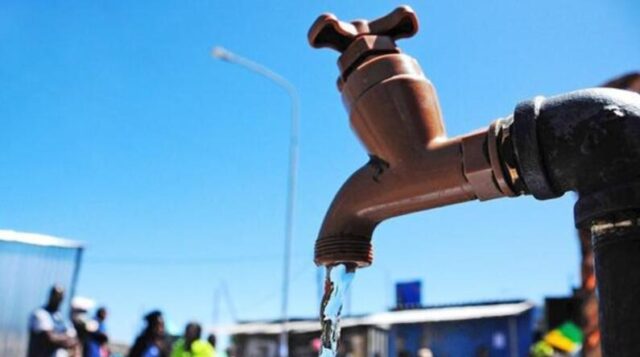A powerful new tool has been introduced to help angry and frustrated South Africans force authorities to act and resolve their water crises.
A POWERFUL new tool has been introduced to help angry and frustrated South Africans force authorities to act and resolve their water crises.
Across the country, people are fighting individual battles over water outages, leaks, slow or no responses to complaints, and exorbitant bills for “air”.
Now communities can join forces with environmental organisation WaterCAN to demand action.
WaterCAN executive manager Dr Ferrial Adam said the organisation has launched a two-pronged national campaign to build more powerful groups to tackle the crisis together.
“There is a move to create a countrywide visual picture of the extent of the problems and hold authorities to account,” said Adam, who is leading the drive to create a map to identify the hot spots across South Africa.
She asked everyone who suffered prolonged water outages and slow response to complaints of leaks leading to water wastage to contribute to the online map to create a picture of all the affected areas and pinpoint hot spots with the data.
The map will allow people to see what is happening in their areas.
Parallel to gathering information to build the map, the organisation is also conducting a survey to measure the extent of the problem of “billing for air” because of faulty meters.
Adam said they had realised this problem was more than “some isolated incident” and needed data to prove this and demand action.
She said: “There had been reports of specific meters which kept measuring ‘water’ usage even though there was no water flowing through the pipes.
“Physically, air flows like water, so these meters measure that flow, read it as water and people are billed for that.
“People must first check if there are leaks in their property, but if there’s no leak and no water in the taps and the meter keeps running, then it’s air.”
She said one of the causes was improper “bleeding” of air out of the system if there has been an outage.
“Many people have raised this issue with us at WaterCAN, saying they are being charged for air running though their water meters, especially when there has been a burst pipe in their region, or during water shifting, leaving them with exorbitant amounts to pay for something they did not use. Often it is very difficult to resolve this dispute with the municipality,” said Adam.
“We’re gathering data to show there really is a problem with some meters.
“We need the public’s eyes and ears to help us hold authorities to account. We will evaluate the outcome of the survey every two weeks and share the information publicly. As individuals, we are weak to challenge this air billing, but as a collective we have a stronger voice. This has been going on for years and someone in government has to listen.
“The map will help us to identify hot spots so we can approach the authorities, ask them why the problem has not been resolved and what they’re doing about it. It will be a long-term process because we need to gather the data to build it,” said Adam.
“The online portal allows people to log incidents of water shortages and leaks, but they must first report it to the local authority so they can provide a reference number in their online report.
“The map will also serve as a real time indicator of water-related issues and track the time it takes authorities to respond and resolve them.”
The Department of Water and Sanitation’s recent No Drop report showed that 47.4% of treated water supplied was non-revenue water. Non-revenue water is treated water that is bought or produced by the water services provider or municipality for which that entity gets no revenue. This is caused by water leaks, poorly functioning or non-existent meters, illegal connections, and poor billing and revenue collection.
It does not include free basic water. Non-revenue water causes significant losses, as infrastructure such as dams and water treatment plants are built to capture and process the water, but no revenue is collected. It is estimated that the country loses almost R28 billion in non-revenue water.
“We believe that mapping these leaks and tracking water cuts will empower communities and ensure a transparent approach to water services,” said Adam.
“We encourage everyone to use our map. This will not solve the issue, but it will help us to monitor the situation over a long period and hold the relevant authorities to account.
“Monitoring this information is crucial as it provides us with insights into hot spots and reveals the extent to which fundamental human rights are being overlooked. This data underscores the urgent need for the Department of Water and Sanitation to recognise the crisis in the country’s water situation and adopt a proactive ‘war room’ approach to address it,” said Adam.
WaterCAN is committed to preserving and protecting South Africa’s water resources by promoting responsible water management and raising awareness about water quality so communities become stewards of their water sources.
To access the No Water Leaks Map go to watercan.org.za/nowatermap/
To participate in the survey go to watercan.org.za/air-in-water-meter/








